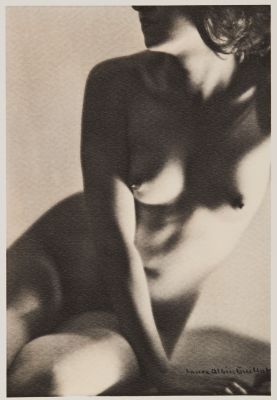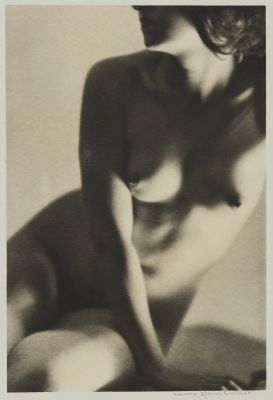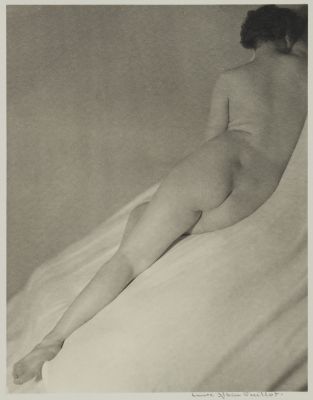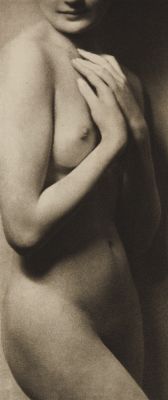
Title
Plate VArtist
Albin-Guillot, Laure (French, 1879-1962)Publication
La Déesse CyprisDate
1946Process
PhotogravureImage Size
19.5 x 15.5 cmSheet Size
24 x 36 cm
In 1946 La déesse Cypris was published in Paris, intended as an ‘éloge de la volupté’ (a eulogy to sensuality). Its symbol is Cypris, the goddess of beauty and sensuality, better known as Aphrodite or Venus. The book was also a homage to the beauty of the well-trained, sporting and powerful female body. In La déesse Cypris, the author, De Montherlant, explains that it was of essential importance for women to develop their muscles, thereby losing their sense of inferiority. It was finally all about ‘preparing for a different way of loving, in which they play a healthier role’.
The book is made up of loose gatherings and features twelve nude photographs by Laure Albin-Guillot, the ‘grande dame’ of French photography of the 1920s and 1930s. Laure Meffredi, born in Paris in 1879, married Dr. Albin Guillot, specialist in micro-organisms, in 1901. Together with him, she collected and photographed the cell structures of plants, crystals, and animal micro-organisms. The resulting book, Micrographie Décorative (1931) is celebrated as a ground breaking modernist blending of art, science and printing technlogy. Albin-Guillot also developed into a portrait photographer. Her portraits of writers such as André Gide, Paul Valéry, Jean Cocteau and Henry de Montherlant are especially well known. She published her work regularly in La Revue française de photographie, in Arts et métiers graphiques and in Vu, and also submitted it to exhibitions. She also developed many initiatives to promote French art photography. In 1935, as head of the ‘Archives photographiques des Beaux-arts’, she established the museum of photography in the Palais de Chaillot, which had just been newly constructed. In that same year she was also appointed president of the national Société des artistes photographes. Besides that, she continued to illustrate books, like Narcisse by Paul Valéry (1936), Chansons de Bilitis by Pierre Louÿs (1937), and the sheet music of Préludes by Débussy (1948).
In her nude photographs, a genre in which she became famous, Albin-Guillot revealed the female body discreetly, in soft focus and with precise lighting. She used special lenses in order to achieve a foggy effect around the body. In La déesse Cypris, the women are photographed against a uniform background, filling the entire frame. Nothing distracts from their figures. Nude photography was popular amongst female photographers in the 1930s, both inside and outside of France. This allowed them to show their modernity and their own perception of the beauty of the female body. They also proved that photographing the female body was not the exclusive domain of men. Emancipation, beauty and sensuality come together in La déesse Cypris. The book was printed in an edition of 250 copies, ten of which were printed in the Fresson pigment process.
This may be the last elaborate photogravure project before the process went dormant.
References
[1] source of this content is unidentified.











